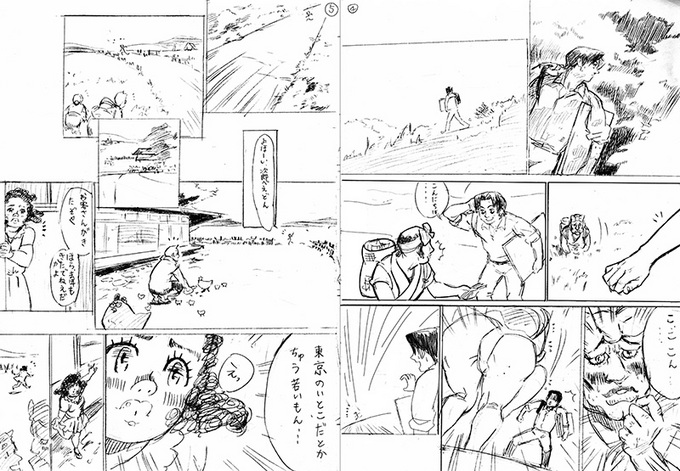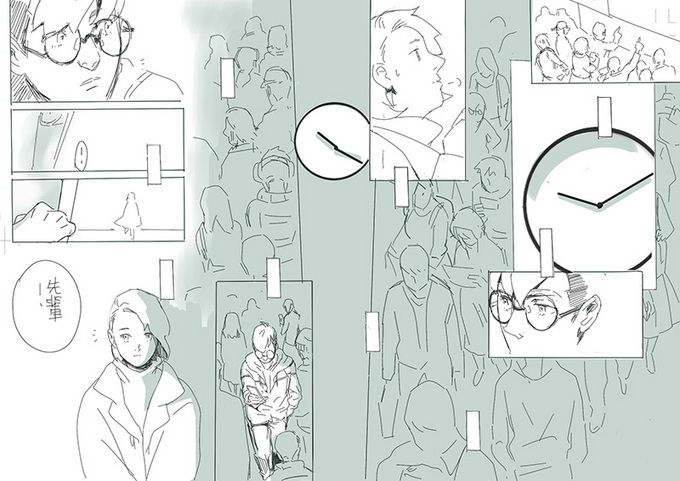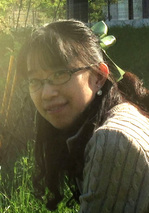The New Generation of Manga Artists in China and Sekai Manga Juku
Qi Mengfei (PhD student, Cultural Studies, Beijing Center for Japanese Studies)
Sekai Manga Juku and I
I was born in the 1980s and grew up reading Japanese manga. The dream of many children in my generation was to become manga artists and draw the stories we created in our heads to our heart's content. At the time of the university entrance exams, however, I did not have the courage to apply to an art degree course, which seemed like the shortest route to realizing my dream of becoming a manga artist, and instead entered the School of Foreign Studies, Anhui Normal University. This decision would turn into a 10-year long detour.
As luck would have it, from 2011 to 2012, I participated in a project for the creation of a manga script. Regretfully, however, I did not have enough skill, so the results of my work were not very good. While that experience helped me renew my relationship with the world of manga, at the same time, it reminded me of the gap that separated me from professional manga artists. I even thought that I could never draw anything worthy to be called manga.
An encounter with Eiji Otsuka, the writer of MPD-Psycho (KADOKAWA SHOTEN, 1997-2016) and one of the most popular artists among Chinese aficionados of seinen manga (manga marketed to young adult males) was a turning point in my life. By a stroke of good fortune, when I returned to Beijing in 2012, I met Mr. Otsuka, who was in China to deliver a lecture at the Beijing Center for Japanese Studies, and I even showed him the 60-page manga I had drawn. In a café in the west campus of the Beijing Foreign Studies University, Mr. Otsuka kindly read my manga and provided me with feedback. As a result, I was forced to cut the volume nearly by half. I tensely listened to his words. My heart had plunged to a deep abyss, but at the same time, I felt extremely excited. "So this is the way to tell a story through manga! There is such a huge difference between my understanding of panel layout and the truly appropriate way of expression in manga!"
I wanted to study manga! When I conveyed this wish to Mr. Otsuka, he kindly invited me to participate in the Sekai Manga Juku (World School of Manga), a manga educational program broadcasted live once a month on the Japanese video sharing website Niconico. Mr. Otsuka played a key role in the program, which had an open format and comprehensible content so that creators from all over the world who wanted to study manga expression methods could understand it. The program not only taught techniques and provided practical guidance, but also explained methodologies, provided manga's historical background, and introduced relevant theories. The lecturers also provided up-to-date information collected from all over the world. The program featured diverse and solid content delivered in a relaxed manner.
I participated in the program through posting my online submissions, which were broadcasted a total of 14 times in one year. In that period I completed two designated scripts and a 160-page rough manga draft and learned the basics of manga creation.

Tracing Shotaro Ishinomori's classic work Ryujin Marsh. In the beginning, I did not know how to draw manga properly and had many holes in between my frames.

Qi Mengfei's Our Fragile and Shining Days. Searching for expressive methods that would increase the appeal of my work, I found inspiration in Shotaro Ishinomori's Manga Nihon no Rekishi (Manga: History of Japan).
Did I make any progress? I feel very fortunate to have participated in the Sekai Manga Juku. It gave me an incredible opportunity to embark, once again, on the path to realizing my dream.
Sekai Manga Juku @Beijing
In 2014 and 2015, the Sekai Manga Juku shifted from online to offline activities. For two consecutive years, the school, in cooperation with the Beijing Film Academy, organized a tightly-packed curriculum called the East Asian Manga Study Course.
The participants were mainly students of the manga classes at the Beijing Film Academy, and in addition to submitting all the works stipulated in the curriculum, they came up with a broad range of questions. After classes, they would form a large crowd around the teacher, and many of them would bring out their own works and request evaluation and feedback. Each class exceeded its time limit, and the whole course gained immense popularity.
The Beijing Film Academy provided enormous support for this initiative over a period of two years. As the best academic institution in the field of Chinese cinema, TV, and anime, it has rich resources and numerous teachers. The contemporary story manga methods originate in cinema, and the students in the manga classes of the Beijing Film Academy undoubtedly enjoy the best possible academic environment. Yet, compared with Japan, the history of manga in China is relatively short. It is still a young art, and consequently, manga education in China as a whole is still in its infancy. Through this initiative, I explored the methods of manga education and felt that China's institutions of higher education still have a long way ahead of them
Young leaders who have developed their skills using this platform are working to advance further the concept of the "manga school." One of the teachers in the course, Tatsuya Asano, has decided to shift his activities to Beijing. Filled with passion for China, Mr. Asano is hoping to realize opportunities for Chinese and Japanese manga creators and aficionados to come together and form friendships as they interact and study, and thus contribute to the further advancement of Asian manga in cooperation with the new generation of Chinese manga artists.
 Qi Mengfei
Qi Mengfei
Qi Mengfei is a doctoral student at the Cultural Studies of the Beijing Center for Japanese Studies. She has been infatuated with Japanese manga ever since her childhood. Her research field is also manga. In the future, she wishes to teach at a university and become a manga artist.
Back Issues
- 2019.8. 6 Unraveling the Maker…
- 2018.8.30 Japanese Photography…
- 2017.6.19 Speaking of Soseki 1…
- 2017.4.12 Singing the Twilight…
- 2016.11. 1 Poetry? In Postwar J…
- 2016.7.29 The New Generation o…
- 2016.4.14 Pondering "Revitaliz…
- 2016.1.25 The Style of East As…
- 2015.9.30 Anime as (Particular…
- 2015.9. 1 The Return of a Chin…

